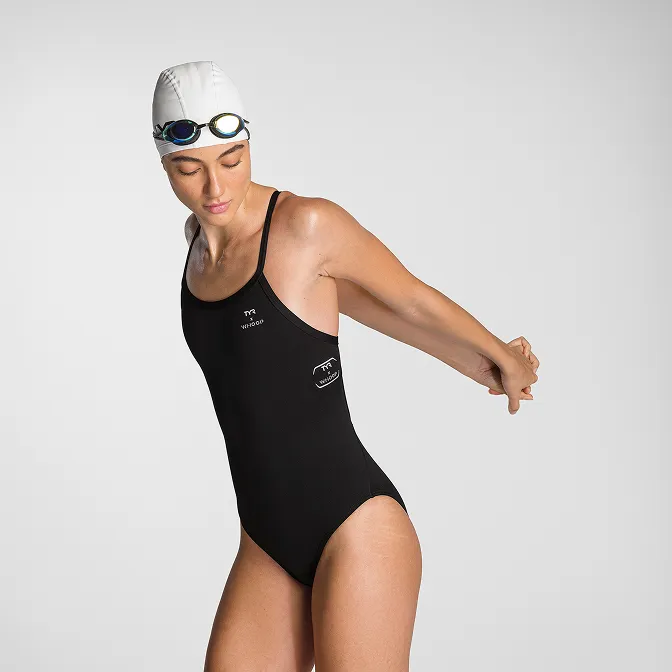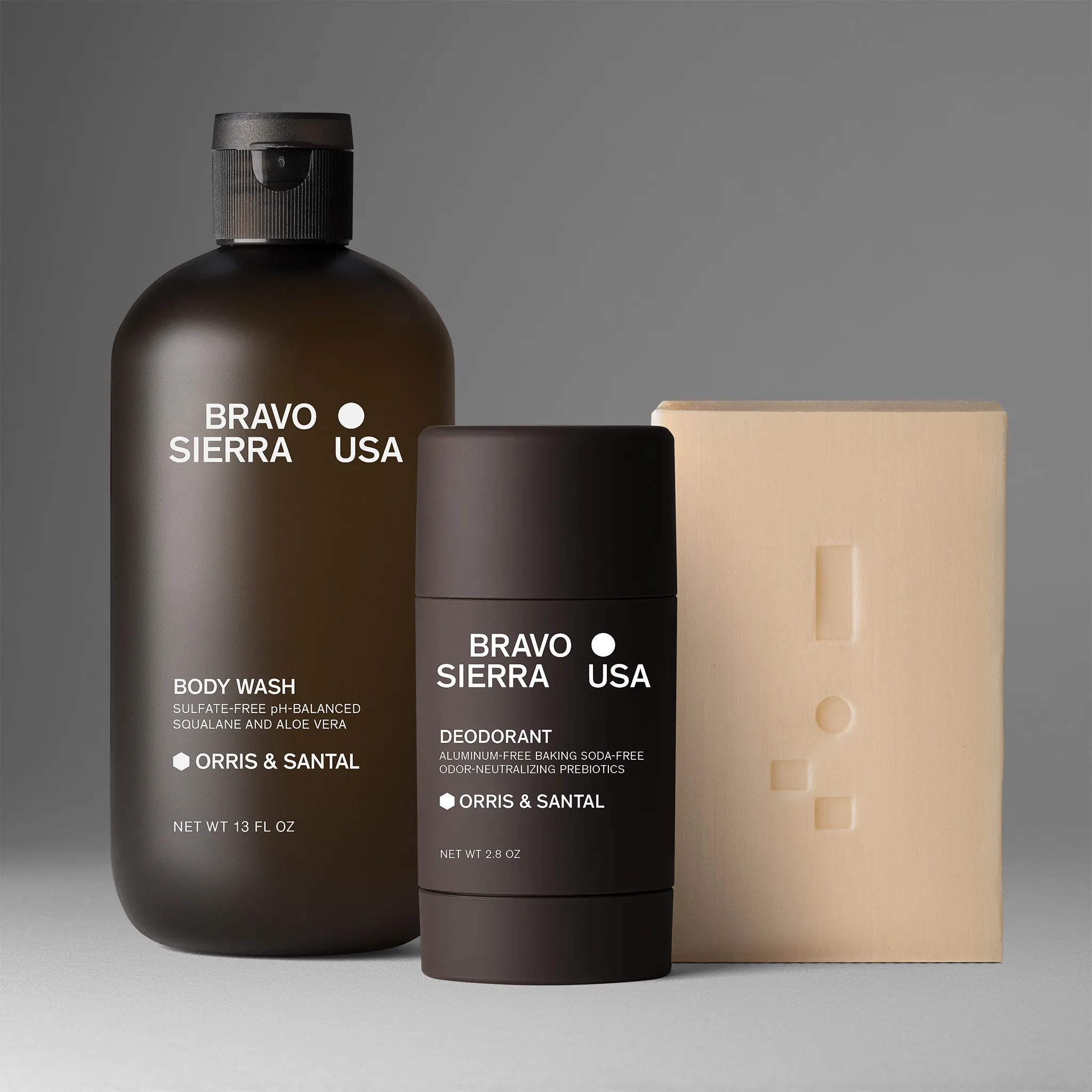Want your products to pop with bright, clean, and irresistible visuals? High-key product photography is the secret weapon of top e-commerce brands in 2025. The demand for this style has soared as online stores and advertisers race to capture attention and drive sales in a crowded digital marketplace.
Mastering high-key product photography can make your products look more appealing, boost your conversion rates, and help your brand stand out from the competition. If you want to turn browsers into buyers, this technique is a must-have in your creative toolkit.
In this guide, you’ll learn exactly what high key photography is, the essential gear you need, how to set up your studio, a step-by-step shooting workflow, post-production tips, and advanced tricks for professional results. Let’s dive in and unlock the secrets to stunning product photos.
Understanding High Key Product Photography
High-key product photography is more than just a trend — it's become a cornerstone of how brands present products online in 2025. This style, known for its clean and glowing visuals, is everywhere from fashion e-commerce to tech ads. Let's break down what makes product photography so powerful and why it's dominating the digital shelf.
Definition and Core Principles
High-key product photography is defined by its use of white seamless backgrounds, minimal shadows, and soft, even lighting. The goal is to create a visually uplifting image in which the product stands out crisply against a nearly pure-white background.
Unlike standard or low-key photography, which uses more contrast and dramatic shadows, high-key product photography keeps distractions to a minimum.
You’ll see this style in 2025’s top e-commerce campaigns because it conveys a sense of freshness and clarity.
Key characteristics:
- Pure white or very light backgrounds
- Gentle transitions and soft shadows
- Consistent, flattering illumination
This approach helps products look polished and premium, making them more attractive to online shoppers.
Psychological Impact and Brand Benefits
High-key photography does more than just look good — it influences how people feel about a product. The brightness and cleanliness evoke trust, quality, and transparency.
When shoppers see products clearly, with every detail visible, they perceive higher value and reliability. That’s why beauty and tech companies often use this type of product photography to reinforce their premium image and build customer loyalty.
Benefits for brands:
- Boosts perceived product quality
- Increases customer trust and engagement
- Drives higher sales and conversions
It’s a psychological nudge that makes people more confident in their purchase decisions.
Common Use Cases and Industry Trends
High-key product photography shines in categories like fashion, cosmetics, electronics, and home goods. In 2025, it’s also evolving to fit new technologies, such as AR and VR shopping experiences, where clarity and consistency are essential.
Online marketplaces like Amazon and Instagram increasingly require high-key images for listings. Brands that master this style see more clicks and higher engagement. For a deeper look at these requirements, check out the E-commerce image standards guide, which details how high-key product photography aligns with current marketplace rules.
Trend highlights:
- Growth in AR/VR-ready product visuals
- High-key images driving social media engagement
- Marketplace standards shaping image style
Challenges and Misconceptions
Some people think high-key product photography means overexposed or flat images, but that’s a common misconception. The real challenge is to keep textures and true colors intact while avoiding harsh shadows and color casts.
Common pitfalls:
- Overexposing and losing detail
- Accidental color tints from backgrounds or props
- Creating harsh or distracting shadows
The key is to use precise lighting, careful exposure control, and thoughtful image editing. By focusing on these details, you ensure every product looks its best, maintaining authenticity and visual appeal.
Essential Equipment and Studio Setup for High Key Photography
Creating flawless high-key product photography starts with assembling the right gear and optimizing your studio environment. Every piece of equipment plays a vital role in achieving those crisp, bright, and shadow-free images that define this style. Let’s break down exactly what you need for success.
Camera and Lens Selection
For high-key product photography, your camera is your creative engine. Modern DSLR and mirrorless cameras from 2025 offer exceptional resolution and dynamic range, essential for capturing fine details against bright backgrounds.
Choose a camera with a large sensor for better low-light performance and color accuracy. Lenses matter too:
- For small products, a 90mm or 100mm macro lens is ideal.
- For larger items, a 50mm or 85mm prime lens delivers sharpness and minimal distortion.
Autofocus speeds up workflow, but manual control is vital for precision. Aim for at least 24MP resolution to meet commercial standards in high-key product photography.
Lighting Gear and Modifiers
Lighting is the heart of high-key product photography. You’ll want even, diffuse light to eliminate harsh shadows and bring out the product’s true colors.
Studio strobes and continuous LED lights both work, but LEDs are now popular for their consistent color temperature and cool operation. Softboxes, umbrellas, and diffusers are your best friends for softening light. Use at least three lights: one for the background, two for the product from different angles.
For more in-depth product photography lighting tips, explore professional guides that help you master light placement and balance for high-key product photography.
Backgrounds and Surfaces
A pure white background is the signature of high-key product photography. You have options:
- Seamless white paper: affordable, disposable, great for small items
- Acrylic sheets: more durable, easy to clean, perfect for reflective effects
- Fabric backdrops: flexible, but require extra care to avoid wrinkles
For large-scale shoots, a cyclorama (infinity wall) creates a shadowless transition for products. Keep backgrounds spotless and free of color contamination, as even minor stains can affect high-key product photography results.
Studio Space Optimization
The right studio layout streamlines your high-key product photography workflow. Aim for a space at least 12x15 feet for flexibility. Organize your set so you have clear zones for shooting, prepping products, and storing props.
Keep walkways open to minimize accidents. Position your product at least 4 feet from the background to reduce unwanted shadows. Use rolling tables and carts to move gear and products efficiently.
A well-planned studio not only improves safety but also boosts productivity, letting you focus on creating standout high-key product photography.
Accessories and Support Tools
Accessories can make or break your high-key product photography session. Use a sturdy tripod for sharp, consistent product shots. Tethering systems let you view images in real-time on a monitor, speeding up adjustments.
Remote triggers prevent camera shake. Color checkers and gray cards ensure accurate color reproduction, a must for e-commerce. Reflectors bounce light to fill in shadows, while flags help control light spill.
Product stands, risers, and clamps stabilize items, making styling a breeze and ensuring every shot is picture-perfect for high-key product photography.
Step-By-Step High-Key Product Photography Workflow
Nailing high-key product photography requires more than just a bright background. A structured, repeatable workflow is the secret to producing stunning images every time. Whether you're building your first studio or scaling up for a major e-commerce launch, this step-by-step guide will help you turn products into visual magnets.
Pre-Shoot Preparation
Before you even turn on your camera, preparation is everything in high-key product photography. Start by thoroughly cleaning each product to remove dust, fingerprints, and smudges. Use microfiber cloths, compressed air, and gloves for delicate items.
Create a checklist to ensure nothing is missed:
- Product cleaned and polished
- Props and stands are ready
- Background spotless and wrinkle-free
- Extra batteries and memory cards available
Consistent product positioning is key for a cohesive look across your catalog. Mark positions with tape or use a template for repeated shots. Plan your shot list in advance, including all angles and detail shots needed for your platform.
Leading studios often use a pre-shoot workflow that includes digital mockups and reference images. This ensures each team member is aligned, minimizing reshoots and keeping your high-key product photography efficient.
Lighting Setup and Testing
Lighting is the backbone of high-key product photography. Begin by positioning your key light at a 45-degree angle to the product. Add fill lights or reflectors to soften shadows and maintain even illumination. Place background lights behind or beneath your backdrop to eliminate gray tones and achieve that signature white.
Test your setup before shooting. Use a light meter to check exposure across the scene. Adjust your lights to avoid hotspots and harsh shadows. Softboxes, umbrellas, and diffusers help create the soft, shadow-free look essential for high-key product photography.
Take test shots and review the histogram for clipped highlights or underexposed areas. Adjust your lighting as needed until you see even, bright results with minimal shadow.
Camera Settings and Shooting Techniques
To capture the crisp clarity of high-key product photography, switch your camera to manual mode. Set your ISO as low as possible (100 or 200) to reduce noise. Choose an aperture between f/8 and f/16 for sharpness and depth of field. Adjust your shutter speed to balance exposure, ensuring the background stays pure white without blowing out product details.
White balance is crucial — use a gray card or custom setting to keep colors true. For small or intricate items, try focus stacking: take multiple shots at different focus points and blend them in post.
Shooting tethered is a game-changer in high-key product photography. Connect your camera to a computer for instant previews, making it easy to catch issues early and make quick adjustments.
Composing and Styling the Shot
Composition plays a major role in product photography for e-commerce platforms. Frame your product according to the requirements of Amazon, Shopify, or your chosen marketplace. Leave enough space around the product for cropping and to comply with platform guidelines.
Styling can range from strict minimalism to subtle context props. Avoid anything that distracts from the product. Use risers or stands to create a floating effect, especially for beauty and tech items. Consistency is vital — use the same angles, lighting, and styling across your entire product line.
Review before-and-after shots to see how simple tweaks can elevate your high-key product photography. A touch of context can make products more relatable, but always keep the focus clear.
Capturing the Image
Now it is time to shoot. Start with a bracketed sequence: take multiple exposures to ensure you capture both highlights and shadows. Check each frame for dust, reflections, or distracting elements. Use live view and overlays to align the product precisely within the frame.
Select the final shot based on sharpness, color accuracy, and absence of flaws. Remember, attention to detail separates average from outstanding high-key product photography.
Troubleshooting Common Issues
Even pros encounter issues in high-key product photography. Overexposure can wash out details, while underexposure leaves the background dull. Adjust your lights, lower exposure, or use flags to block stray light and fix these problems.
Color casts from backgrounds or props can distort product color. Use white or neutral surfaces, and correct in-camera with white balance settings. Glossy products? Angle your lights and use polarizing filters to tame reflections.
For advanced fixes like dust removal or seamless backgrounds, explore high-end retouching for product photos to keep your images flawless. Quick troubleshooting and post-production tweaks ensure your high-key product photography stays professional.
Workflow Optimization and Efficiency Tips
Efficiency is essential for high-key product photography, especially with extensive catalogs. Batch shooting allows you to photograph similar items in sequence without resetting lights or props. Use checklists and automation tools to track progress and avoid missed shots.
Collaborate with stylists and assistants to streamline setup and keep the workflow moving. Leading studios report up to 30 percent faster turnaround by using digital shot lists and instant feedback systems.
A smooth workflow means you can focus on creativity, knowing the technical side of high key product photography is covered.
Post-Production and Retouching for High-Key Images
Nailing your high-key photography in-camera is just the beginning. Post-production is where your images go from good to truly irresistible. Smart editing ensures crisp, clean backgrounds, accurate colors, and a polished look that stands out in every marketplace.
File Management and Selection
Efficient file management is essential for high-key product photography projects. Start by importing all RAW files into organized folders, using clear naming conventions for each product and variation.
Back up your files immediately to avoid accidental loss. Set up a logical folder structure to separate RAW, selects, and final edits. Use metadata tags to label key details like SKU, color, and shoot date, making future searches a breeze.
When selecting the best images, prioritize sharpness, accurate exposure, and the cleanest background. Create a shortlist using star ratings or color labels in your editing software, which helps streamline your workflow and maintain consistency throughout your high-key product photography process.
Basic Adjustments: Exposure, White Balance, and Contrast
Getting the pure white background right is crucial for high-key photography. Start by adjusting exposure sliders to eliminate any gray tones in the background, but watch out for clipping highlights that could erase product details.
Fine-tune the white balance to ensure true-to-life colors, especially for products where accuracy is key. Use a gray card reference shot if available. Next, tweak contrast to make your product pop against the bright backdrop while preserving subtle textures.
Industry-standard tools like Adobe Lightroom, Capture One, or the latest Photoshop (2025) updates offer advanced controls for these adjustments. Remember, even small tweaks can have a big impact on how your high-key product photography appeals to shoppers. For more insights, see how high-quality product images boost conversions.
Advanced Retouching Techniques
High-key product photography often requires advanced retouching to achieve flawless results. Start by zooming in to remove dust, blemishes, or distracting elements with spot healing or clone tools.
For products with complex edges, use clipping paths or selection tools to refine the white background and extend it seamlessly if needed. Pay special attention to preserving natural textures and material qualities, especially for items like cosmetics or glassware.
Non-destructive workflows, such as editing on adjustment layers or using smart objects, let you experiment without risk. For more inspiration on perfecting beauty and skincare images, explore a beauty product photography service, which often relies on high-key product photography for a pristine finish.
Ensuring Consistency Across Product Lines
Consistency is non-negotiable in high-key product photography, especially when shooting extensive catalogs. Batch editing workflows help apply the same exposure, contrast, and white balance settings across multiple images.
Create and save presets or actions in your editing software to maintain uniform colors and tones. Regularly calibrate your monitor and use color checkers for accurate results. Reference your brand’s image guidelines to ensure every photo aligns with your identity.
Uniformity builds trust with customers and makes your shop look professional. With consistent high-key product photography, your brand stands out for all the right reasons.
Exporting and Optimization for Web and Print
Exporting your high-key product photography correctly means your images shine everywhere they appear. Choose the right file format: JPEG for most e-commerce platforms, PNG for transparent backgrounds, and WebP for faster page load times.
Set resolutions to at least 2000 pixels on the longest side for online stores, and higher for print. Use sRGB color profiles for web and CMYK for print. Compress images just enough to keep file sizes small without sacrificing quality.
Check the requirements for platforms like Amazon or Shopify to avoid rejection. Optimized high-key product photography ensures fast load times, sharp details, and a seamless shopping experience.
Advanced Tips and Creative Variations in High-Key Product Photography
Elevate your high-key product photography by embracing new creative approaches and leveraging the latest tech. Let’s explore how you can push boundaries, adapt for every product type, and ensure your visuals stand out in the evolving e-commerce landscape.
Integrating High Key with Creative Styling
High-key photography is more than just bright backgrounds. It’s a blank canvas for bold branding and creative storytelling. Use pops of brand colors, floating elements, or subtle lifestyle props to add context and personality without overwhelming the scene.
For example, beauty brands often suspend products or use soft shadows to create a sense of depth. Minimalism remains key, but you can experiment with transparent props or colored gels to make your product pop. In 2025, leading campaigns blend high-key product photography with playful styling, creating scroll-stopping images that feel fresh and modern.
Want to stand out? Try adding small brand motifs or interactive AR overlays. These touches can reinforce your identity without sacrificing the clean appeal of high-key product photography.
High Key for Different Product Types
Every product has unique visual needs, and high-key product photography adapts to each. For reflective items such as jewelry or electronics, use additional diffusers and flags to control highlights and minimize glare.
Textured products benefit from angled lighting that preserves detail while keeping shadows soft. Transparent items, such as glassware, may need backlighting or gradient backgrounds to define their shapes in the high-key environment.
White-on-white products are especially challenging. Isolate them with subtle edge lighting or slight shadowing to avoid losing definition. Whether you’re shooting watches, tech gadgets, or skincare products, tailor your high-key product photography setup to match each item's material and finish.
High Key in Motion: Video and 360° Product Spins
Video and interactive spins are now essential in high-key product photography for e-commerce. Set up consistent, even lighting to avoid flicker or motion-induced shadows. Use a pure white backdrop and rotate products smoothly for seamless 360° presentations.
When filming, lock your exposure and white balance to keep colors true across every frame. For 360° spins, automated turntables and specialized software ensure flawless loops.
Interactive product spins let customers view all angles, boosting confidence and reducing returns. Incorporate high-key product photography principles in every frame for a cohesive, professional look that matches your still images.
Leveraging AI and Automation in 2025
AI is revolutionizing high-key product photography. Automated background removal, batch retouching, and smart workflow tools speed up editing and ensure consistency. Machine learning can analyze your product catalog, flag inconsistencies, and even suggest optimal lighting setups. By embracing these tools, studios save hours and reduce costs, all while achieving flawless, high-key product photography results.
Stay ahead by integrating automated platforms into your workflow. You’ll deliver more images, faster, without sacrificing quality or detail.
Meeting Accessibility and Inclusivity Standards
High-key product photography should be accessible to everyone. Always add descriptive alt text to your images for screen readers. Maintain strong color contrast between products and backgrounds, ensuring compliance with WCAG 2.2 guidelines.
Inclusive styling goes beyond accessibility. Feature diverse models or props that reflect your customer base. Brands recognized for accessible imagery not only serve all users better, but also build trust and loyalty.
Remember, your high-key product photography isn’t just about aesthetics — it’s about welcoming every potential customer with clear, inclusive visuals.
Measuring Success and Continuous Improvement
How do you know your high-key product photography is working? Track key metrics like conversion rates, engagement, and bounce rate. A/B test different image styles to see which drives more sales.
Gather direct customer feedback and review analytics regularly. Use this data to fine-tune future shoots and creative direction. Continuous improvement keeps your visuals effective, relevant, and aligned with your brand goals.
By monitoring performance and adapting, your high-key product photography will consistently deliver results that grow your business.
Ready to take your product photos to the next level after learning all the high-key techniques and workflow tips we covered? If you want your brand visuals to truly stand out and drive more conversions, why not work with a team that lives and breathes photography every day? At Squareshot, you get expert photographers and a streamlined process tailored for e-commerce success.

Product A
SQUARE SHOT





























